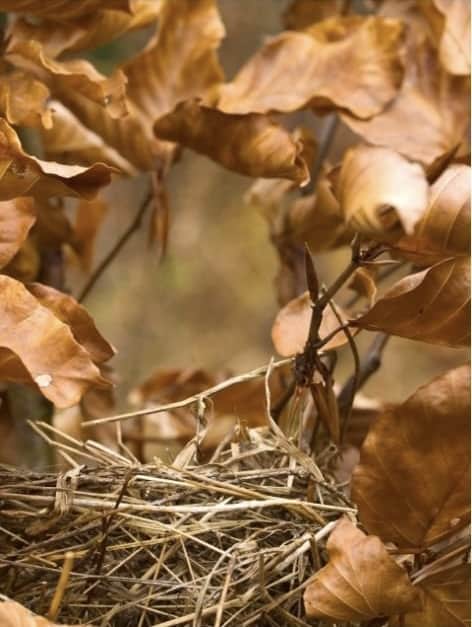Various types of birds lay eggs year-round, depending on the species. For most birds, however, egg-laying peaks in the springtime. Some bird species may only lay a single egg per year, while others can lay up to twelve eggs or more. Interestingly, clutch sizes (the total number of eggs laid by a female during one nesting attempt) vary widely among different bird species.
All year round, birds are laying eggs. Springtime is when most birds lay most of their eggs for the year. However, the frequency of laying eggs varies depending on bird species, fitness, age, and food availability.
Wrens, for example, have a clutch size of four to seven. This means that the female will lay four to seven eggs and then incubate them until they hatch. They can have two broods, or clutches, a year. However, if the first brood doesn’t survive, the female will go ahead and lay a second clutch.
Long-tailed tits, on the other hand, will have one to two clutches per year. Per clutch, they will lay anywhere from six to eight eggs. The female will incubate the eggs for about two weeks before they hatch.
A more well-known bird, robins, will have five to seven eggs per brood. Like the wren, if the first brood doesn’t survive, the female will lay a second or third brood.
As you can see, there is quite a bit of variation among different bird species when it comes to how many times they lay eggs in a year.
Many factors influence how often birds lay eggs. Some of these include bird species, fitness, the age of the bird, food availability, and the environment in which the bird lives.
Birds in temperate regions generally lay fewer eggs than those in tropical areas. This is because the food availability and environmental conditions are more favourable in tropical regions, meaning that birds can raise more young successfully.
The birds’ species also play a role in how often they lay eggs. Chickens, for example, are bred for egg-laying and will lay an egg almost every day. On the other hand, Eagles only lay eggs a few times a year.
Age can also affect how often it lays eggs. Younger birds generally lay more eggs than older birds, as they have not yet reached their reproductive maturity. Once they reach maturity, their egg-laying frequency usually decreases.
Food availability is another important factor that affects how often a bird lays eggs. When food is plentiful, birds will lay more eggs. Conversely, when food is scarce, birds will lay fewer eggs. This is because they need to save their energy to survive.
The environment in which a bird lives can also influence its egg-laying frequency. For example, birds may not lay as many eggs if the weather is very cold. This is because it takes more energy to keep warm, and they need to conserve their resources in order to survive.
Birds generally rely on primary cues to determine when to lay eggs: their fitness, length of daylight, and the latitude in which they live.
A bird’s fitness is the most significant factor determining when it will lay eggs. Fitness refers to the reproductive potential of an individual bird. In general, birds will lay eggs when their reproductive potential is high, producing healthy offspring.
The length of daylight is also a significant cue for birds to determine when it is time to lay eggs. It involves the hormonal changes that occur in the bird’s body in response to changes in the length of daylight. These hormones affect the reproductive organs and prepare the bird’s body for breeding.
The latitude in which a bird lives also determines when to lay eggs. Birds that live in high latitudes have less time to breed than birds in lower latitudes. This is because the days are shorter in high latitudes, and there is less time for the bird to find a mate, build a nest, and lay eggs.
These cues are important for birds to determine when it is time to lay eggs. By understanding them, we can better understand the breeding habits of birds and how they adapt to their environment.
Some bird species are known as early nesters. These birds will lay eggs before the traditional breeding season starts. This behaviour allows them to take advantage of the early food availability and raise their young before the competition for resources gets too fierce.
Crossbills are one example of an early nester. These birds breed in January, earlier than most other bird species. Crossbills can take advantage of the early season because they feed on pine cones. Pine trees release their cones in late fall and early winter, which means plenty of food is available for crossbills when they start nesting.
Another example of an early nester is the tawny owls. These owls already have their first clutch of eggs by March. Tawny owls nest in tree cavities, and there is usually an abundance of these cavities available early in the season. By laying their eggs earlier, tawny owls can ensure that their young will have a better chance of survival.
Blackbirds are one of the most common early nesters in the United Kingdom. Blackbirds will often lay their eggs in March before many other bird species start breeding. Blackbirds can take advantage of the early season because they nest in gardens, and there is plenty of food available for them at this time of year.
Birds are fascinating creatures, and watching them hatch and grow is a beautiful experience. The number of times a bird lays eggs varies depending on the species. The timing of when a bird lays its eggs is also essential, as it can determine the success of the breeding season. Early nesters have a distinct advantage over other birds, as they can take advantage of the early food availability. By understanding the breeding habits of birds, we can better appreciate these amazing creatures.

